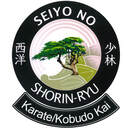|
Are you interested or committed to your martial art? There’s a big difference. "When you're interested in something, you will do it when it's convenient. When you're committed to something, you will do it no matter what." Those who are interested will practice their martial art when it’s convenient for them. If something more interesting is going on or they don’t feel like going to class that day, they don’t show up. They may even schedule appointments or other events at the same time as class. They often miss more classes then they attend in a month. They soon start to slip further and further behind in their training and will most-likely never achieve a 1st dan black belt or higher. Those who are committed to their art have a different attitude. They schedule class times and practice times on their calendar and see those time slots as non-negotiable. That’s THEIR time. No one else can take that time from them. They organize their life and schedules to be there, even if they aren’t 100% motivated that day, they know that showing up always makes them feel better. They know that being great at something is never convenient. It takes the three D’s… dedication, determination, discipline and desire. They don’t make excuses. They embody their craft. They make it known to their friends and family that their practice time is a core value that makes up who they are as a person. They don’t do it for the rank or the recognition, they do it because they ARE a martial artist, not someone who occasionally does a martial art. Are their times in which someone who is committed to their art misses a class or personal practice? Yes, but it’s rare. They might miss if they are extremely ill or have a major event (wedding, graduation, funeral, school/work function, religious event or the occasional vacation.) In some cases, work/school schedules might interfere with class times and the committed student might seek private lessons or contact their Sensei with questions on how best to practice on their own until their schedule changes. Making a commitment to something requires making sacrifices in your life that most people won’t do or understand. Commitment means living a life that most people will never achieve. "It's one thing to have a black belt in karate. It's another thing to BE one." *You can change the word “martial art” for anything you value and commit to in your life. Nourishing a great marriage, being a wonderful parent, having a healthy and fit body, building a successful business or achieving greatness in a field of study all take a level of great commitment.
0 Comments
Recently, an instructor from another karate dojo asked me a question. Here is what they said...
Question.
"I have a student going up for a black belt rank test who has physical limitations and health issues. There will be a lot of people there watching their rank test. I'm concerned about the test as the student is not physically able to perform certain techniques that are usually expected during a black belt test. Specifically, I'm concerned that if we make exceptions for this student to pass their test that other students would feel this isn't fair. Obviously, I want to be inclusive, but I also don't want others to see the rank test and form a negative opinion on what it takes to earn a black belt. How do you maintain high standards and still be inclusive to those with physical limitations? What would you do in this situation?"
Answer.
Here is my short answer: Set your standards high. However, be willing to modify when necessary.
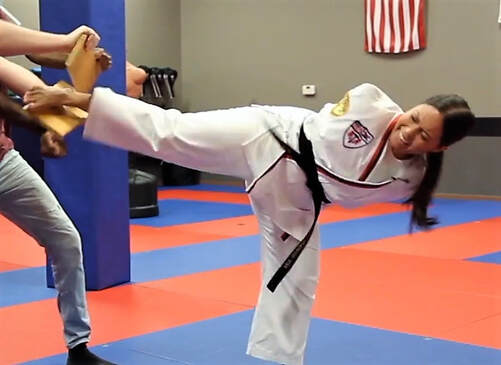 Life with Feet, CC BY 3.0 , via Wikimedia Commons Life with Feet, CC BY 3.0 , via Wikimedia Commons
Here's the longer answer: I have had students with total knee replacements, hip issues, heart issues and other physical challenges. Prior to testing, for those who have physical limitations, we teach modifications to specific techniques that will suit their bodies and physical abilities better.
The student MUST be able to defend themselves fully using the modified techniques. We also require the student to be able to verbalize the original way to perform the techniques, as listed in our system curriculum, even if they cannot do the technique themselves. They need to be able to teach others, without physical limitations, on how to do it properly. At the beginning of that student's rank test, I explain this to all those present. This way there is no misunderstanding. All of our other students have expressed understanding. We are a karate family and they know that every member is pushed and challenged in their own way. No one has ever expressed any unfairness.
Remember, everyone is on their own martial arts journey. Those who have limitations or disabilities should still be pushed to their highest personal ability. Understand, their greatest ability will not be as high as the students without any physical limitations. Do not make comparisons. Rather, seek to improve ALL who come through your doors to be the best they can possibly be. Seek out their strengths and reinforce them.
When rank testing a student, the questions to ask yourself as an instructor are:
​Need more inspiration? Take a look at the Adaptive Martial Arts Association or Karate Adaptation for Disabled People. You might also appreciate the video below for an example of some inspiring disabled karate athletes competing in an international karate tournament.
P.S. If you know of any other martial arts organizations that support karate for all physical capabilities, please comment below!
Attention Students and Parents: We are planning to re-open Branson Karate & Tai Chi for classes the week of June 1, 2020. Class times will be as follows:
Zoom Virtual classes will be as follows:
New Face Mask ProtocolStarting the week of June 1, 2020, Face Masks are required to participate in class training for karate or tai chi. Your face mask must fit properly. This means it should completely cover the nose and mouth without shifting. The mask you wear should be comfortable and not restrict your breathing during training. You may choose bring your own mask from home or purchase a “Ninja Face Mask” from us. Our Ninja Face Masks are constructed of lightweight polyester with a nylon mesh that covers the nose and mouth. The fabric is soft, stretchy, breathable and comfy. It also can be washed and reused. We recommend washing it each night after class… or order two masks, so you can launder them once a week! If you would like a Ninja Face Mask (or two) please order from our Web site. Masks are $5 each. To receive your Ninja Face Mask in time for our re-opening the week of June 1, you will need to order by Tuesday, May 19. Your mask will be handed to you when you arrive at the dojo. We have a limited supply, so order quickly! What to Expect When You Return to ClassHere are some things to be aware of when you first start returning to Karate or Tai Chi class in June 2020.
Thank you for your continued support of Branson Karate and Tai Chi. We have missed you! If you are a new student, we welcome you to our Martial Arts Family. Please bare with us as we navigate this new "normal" for a while. Seishinsei - From the Heart - Leach Hanshi & Borich-Leach Sensei
Did you know that there is some common etiquette that everyone should know when visiting a martial arts school? Whether you are brand new to the martial arts or are a seasoned practitioner there are some general rules that you should follow when visiting any martial arts school, dojo, kwoon or academy. Be aware there are different rules depending on your intention for visiting the class. For example, are you visiting just to watch or are your hoping to train with them for an evening? If you are just visiting to watch a class, the rules are pretty simple: 1. Call the head instructor ahead of time to ask permission to watch a class. Be sure to secure what time the class will be held as well. Be on time. This is important as some instructors have advanced classes that they do not allow the public to watch. 2. Never step on the mats/training floor with your shoes on! Immediately remove your shoes at the door. This alone will impress the instructor. 3. Be polite. Don't interrupt class. Let the instructor come to you. Don't question their teaching methods. Keep your opinions to yourself and just watch politely. If you have questions pertaining to taking a class, wait for an appropriate time when the instructor or assistants aren't busy. 4. Thank them for allowing you to watch their class. If you are seeking to train at a martial arts school for a class or two, the rules are a little more detailed. First of all, it is assumed that you already are a martial artist with a uniform and some training under your belt. If this doesn't apply to you, then its better to watch a class instead. Here's what we tell our Branson Karate students when they visit another dojo. 1. Always ask permission. You should ask permission from your home instructor first. It's polite to do so. Plus, it could be embarrassing for you if the head instructor contacts your home instructor or another student says they saw you at another school, for example. Once your home instructor grants you permission, then you must contact the school you are hoping to visit and ask permission to train with them. They may ask your rank to confirm the appropriate class for you to train in. 2. No matter your rank, offer to pay for the class. Don't expect a free visit. 3. Confirm that the uniform you have is appropriate to wear to their class. For example, some martial arts schools only allow white traditional uniforms. You should be able to wear your current belt rank from your home school. However, some traditional karate dojos prefer that visitors wear a white belt. Drop the ego and strap on a white belt if necessary. 4. Show respect for all those in the dojo, especially the instructor. Use polite manners, remove your shoes at the door and bow when expected. 5. Don't try to prove anything. If you are about to start a sentence with, "at my school we..." then you are NOT being respectful and are trying to prove yourself. Bite your tongue. The adage, "When in Rome, do as the Romans do" applies to you in this situation. 6. Have a "beginner's mind" seeking to learn something from your visit. You can always learn something new from others if you are open to doing so! 7. Never request to spar. If pressured to spar by the school you are visiting, keep it playful. Tell them you are here to learn something new, not to prove anything. 8. Have fun and thank everyone for allowing you to train with them! Visiting other martial arts schools is a wonderful way to grow the martial arts community and good will. At Branson Karate we enjoy having visiting students to watch or train with us. However we do have a vetting process that starts with a phone call. If the student is seeking to train with us and shows a respectful attitude, then great! They are welcome to train with us. If they are there to prove something, such as how well they can fight, then we will simply show them the door. "Be open minded. You will find that doors open for you. A closed mind that seeks to prove something will find that doors slam shut. There is always more to learn, if you are willing and leave your ego at the door." ~ Vashon Borich-Leach
Kids are not naturally self-motivated. When your child’s mindset is not in the right place, even the most fun activities can be a struggle to get to. With that said, here are some strategies to help you work around lack of motivation when trying to get your kid to class.
1. Be attentive to what your child is doing at the moment he/she is supposed to get ready for class. If he/ she is playing or having fun with a friend, then be ready for a battle. With that said, have your child participate in a chore or task that’s not as much fun around 10 to 15-minutes prior to getting ready for class. 2. Be attentive to your own projection of emotions as you get your child ready for class. If you are stressed, rushed, or aggravated in any way, this will project the same emotions on your child. With that said, be sure to project positive and upbeat energy as you are getting your child ready for class. 3. Be attentive to how you respond to your child’s overall performance after class. If you are expressing too much emphasis on what he/ she did wrong versus right, then those negative feelings will carry over. With that said, be sure to limit criticism and focus more on productive conversations after class. 4. Be intentional with your goals by communicating with your child’s instructors. The goal is to foster motivation. Let the instructors know about your struggles so that they can be mindful to motivate your child before, during, and after class. It takes a village, so don’t be afraid to ask for support! 5. Prompt motivation by rewarding your child. Remember that children’s brains are still growing, and most of their development comes from positive stimulation and experiences. With that said, pre-frame the proper behavior that you would like to see when going to class, and then set an attainable number of classes he/ she must attend with this behavior, along with a reward for doing so. For example: attend the next 3 classes with the proper behavior and we will grab ice cream on the way home. These tips are not rocket science but are often overlooked. As parents, we get caught up in the daily grind, so we sometimes forget that situations like this require attentive and intentional parenting. I hope this article sheds some positive light on how to help your child get ready for class. Good luck! Click here for a downloadable and printable document of this article. 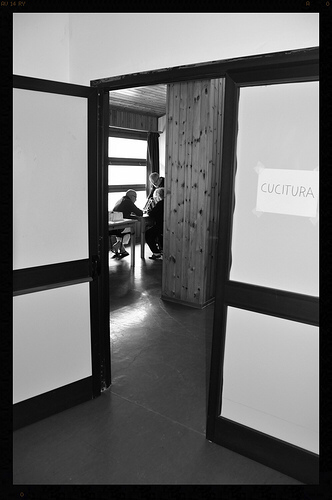 Photo Credit: Stéphane PIA Flickr via Compfight cc Photo Credit: Stéphane PIA Flickr via Compfight cc By Ronald Leach, 9th Dan I always wanted to learn karate. I found an ad for the local YMCA and called to begin classes. This probably wasn’t the best way to begin. I was lucky. I found an instructor that was teaching Taekwon Do, the very traditional TKD, not sport. From him I also learned Shorin-Ryu, Shuri-te, Kyokushin kai, jujitsu and kenjutsu. While l learned, he was learning new arts. I wish everyone could be this lucky. So, you want to take a martial art and the biggest question is what art should you pick? We should back up a bit here and ask, “What do you want out of a martial art?” There a many different answers to this question so let’s split them up into types of martial arts and systems. 1. Martial Arts Sports Aficionado Some people have “Get a black belt” on their bucket list. Spending a lifetime in the martial arts isn’t their goal. Earning a black belt as quickly as possible sounds better. If this is you, I would go looking for a large commercial schools with many students with many kids. These schools produce a black belt in an average of two years. Many of this type of martial arts school will be sports oriented and participate in regular tournaments. Some people are competitive and want competition. There is regular tournament participation and trophies or medals as rewards. You can choose to participate for as long as you wish. Your success will be determined on how skilled you become at sparring and how well you perform forms/kata. (Kata is a series of predetermined moves of blocks, strikes and kicks.) Types of arts that usually fall into this camp are:
MMA (mixed martial arts) draws from multiple systems. Originally, mixed martial arts tournaments were competition between different traditional martial arts such as Shuri-te and Kung Fu. Mixed martial arts, as we see today, was organized through a different path based boxing, and including techniques from kick boxing, jujitsu or any other art that contained something useful. Systems that fall into the fight club category are:
3. The Lifetime Martial Artist Another possibility is to seek knowledge. This would require a more traditional school. These system have a substantial curriculum of techniques and skills for each rank. It is a system that builds on the basics. It will take you 4 to 6 years to earn your first degree black belt from a traditional school. When you attain this black belt, you will be considered proficient in the basics. From this point on, the curriculum should expand you knowledge base at every level. Types of martial arts that usually fall into this category are:
Once you decide what direction you want to go, or are still undecided on the type of art you wish to study, pick some schools in your area and go and observe their classes. Real traditional schools are more difficult to find. You must decide how far you are willing to travel to find the type of school you desire. Ask if you can observe a class. Talk with the instructor and ask questions about the art. Ask about the curriculum and how you work your way through the belts. Find out about how long it takes to get a black belt. This will help determine what you might learn. Don’t take a pseudo wise master persona for lack of transparency. Talk with the students. Look for students with injuries. This is a bad sign. Any school giving a black belt in two years or offers a black belt for a total one-time-fee should be avoided. These schools are money makers for the owners. But, If you just want the black belt and don't care about the knowledge, this would be a possibility. Finally, look at the instructor. Shy away from the disciplinarian. Many time the strict discipline is a cover for lack of knowledge and curriculum. Don’t confuse a strict and harsh disciplinarian with proper etiquette and appropriate discipline. The traditional sensei requires respect and gives greater respect to the student. You should get a sense of humility from the instructor not a bunch of ego or drill sergeant machismo. Everyone knows what humility means but really can’t define it. Let me give you a definition to take with you on your quest through the martial arts. Humility A serene state of mind exhibiting nonjudgmental tolerance and understanding with a modest opinion or estimate of one's own importance. If you find a system or two that you might like, ask if they give complimentary classes. Take those classes and determine if the instruction is what you want. Once you decide, sign up and start. If, after a short time, you find that the school is not what you thought it was, quit and find another school. It is better to cut your losses early. But, it is not a total loss. You will have gained some skills that can help you in a different school. When you step into our karate dojo, you may think you are merely learning the art of self defense.
However, once you are actively involved as a student, you’ll will find that karate is really a leadership academy. The skills taught are things like...
One leadership quality that has been proven to be more important to success in life over intelligence or any other quality is Time Management. In life, each of us are given the same number of hours per day. No one gets more than 24 hours in a day. The most successful people in the world that are masters at their craft, were never granted more than 24 hours per day to accomplish their tasks. What sets those who succeed in life apart from others is their ability to manage time. Whenever I hear someone say they don't have time for Karate I am disappointed. It tells me that the person is failing to manage their time and their life. They have not made their health or their dream of achieving a black belt in karate a priority. Here’s why saying “I don’t have time” is a poor excuse. Karate classes only run 60 minutes. You are to attend twice a week. There are 168 hours in a week. If you are at karate 3 hours per week (including drive time) that’s a mere 1.8% of your week. That’s a small spec in your time schedule! If you are not making classes it is because you are letting other people and other things manage your time. If you want to succeed in anything of importance in life you have to block out the time on your calendar and make it non-negotiable. Instead of allowing other things to steal your time, make a commitment to yourself that those class times are sacred. No one can take them from you. It’s YOUR time. Schedule your karate classes into your week. Time management is part of learning to be successful. Never give up on a dream just because of the time it will take to accomplish it. The time will pass anyway. ~ Earl Nightingale In the beginning of Okinawan Karate or Te, as it was once called, there were no belt ranks. The people learned the martial arts out of necessity. The Island of Okinawa is situated between China and Japan. It was a hot bed of activity because it was a convenient stopping point for ships. This made Okinawa very valuable and it was constantly being raided by the Japanese and Chinese in their efforts to own Okinawa and gain the upper hand in shipping trade. The Okinawan people were constantly having to protect themselves and became very tough and adept fighters using the art of karate. In the end, Japan ended up owning Okinawa. (Today, Okinawa is considered a part of Japan much like Hawaii is part of the U.S.). During the birth of karate in Okinawa, most practitioner’s did not have belts, let alone uniforms. They simply practiced in whatever clothing they had. Usually, because Okinawa was very hot, they practiced in shorts or their underwear. Once karate started becoming popular they began wearing “Samurai under garments” which looked very similar to our modern Karate gi. One of the items of a Samurai under garment was a an obi, this was a cloth sash that wrapped around the waist several times with a purpose to hold ones pants up and secondarily to tuck in a knife (tanto) or sword (katana). The obi and gi traditionally were an off-white natural color because garment dyes were expensive and difficult to obtain. Bleach didn’t exist either, so clothing was the color of its natural, organic state.
One’s “rank” in early karate was apparent by how skillful and how long a person had been practicing in the art. Their age was also important to their status and rank. Age is still a vital part of respect in Japanese culture. Legend has it that the colored belt ranks may have developed over time based on the wearing of one’s originally white obi. As you practiced, over time it would yellow from sweat, get greenish from a combination of dried blood and sweat, turn brown from dirt and then turn black from years of use. Once black the cotton fibers would start to break down and fray which turned the belt grey and then back to white as the middle of the old cotton obi was exposed. So, in affect a karate practitioner goes full circle in their training. This is still the reason why today you will often see experienced black belts continue to wear a very old looking, frayed black belt that begins to turn white as the core of the belt is exposed. It is a symbol of experience and a master practitioner’s journey back to the full circle of a beginner’s mind… just like a white belt. Colored belt ranks, as we see them today, are a relatively new concept that is attributed with being originated by Jigoro Kano, the founder of Judo. Kano was an educator who worked for the ministry of education in Japan and used the belt rank system to integrate Judo and Kendo into the Japanese public school system around 1900. He also played a key part in Judo becoming an Olympic sport. Because of Judo’s popularity many other martial arts styles began to adopt a belt ranking system. Today, there are a rainbow of different colored belts and rankings depending on the style of martial arts you are involved in. Furthermore, the requirements to achieve rank are different for each school. Some martial arts schools award new ranks over years of training. Other schools, award ranks as quickly as monthly! Even the criteria for what qualifies a person for black belt is different from school to school. Unfortunately, this means that in some martial arts systems, a black belt can be achieved relatively easily by anyone… even a child under the age of 12. In the worst of the martial arts schools, you can pay your money and be guaranteed a black belt in 2 years or less, no matter what your capability. It is these schools or “McDojos” as they are sometimes called, that give karate a bad reputation. The nickname, McDojo is in reference to the fast nature of delivering rank similar to the fast-food franchise giant McDonald’s. In the best of the martial arts schools, earning rank is a long process that takes years of training and involves physical, mental and spiritual growth. Belt ranks aren’t something that one chases in hopes of achieving black belt as quickly as possible. But rather, rank is an honor that is earned through hard work, growth of character, lots of practice and constant improvement. The coveted black belt is not something that is easily achieved and not everyone will achieve it in a quality school. It definitely is not something that a quality school bestows around the waist of a child. A child has achieved neither the physical or mental maturity to earn the valued rank of black belt. It is also notable to realize that a first degree black belt represents that you are proficient and know the basics of your style. It does not mean that you are a karate master or an expert in the art. In most high quality karate schools, a shodan rank does not even qualify you to teach karate. Usually, that qualification is reserved for 3rd Dan ranks or higher. There is always so much more to learn and a black belt is just the beginning of what I like to call, “the fun stuff.” The black belt ranks, also called the yudansha level, are where you begin sharpening your techniques. Yudansha have the opportunity to learn more complicated skills, are introduced to new concepts, discover unique escapes, use additional weapons, often start training in other styles and begin understanding that karate is truly a way of life. Take this into your heart and mind, the martial arts are a journey to be experienced. When you commit to a quality karate dojo choose to walk the path without expectation of reward. Do it because you love the art NOT because you want to earn rank. Keep your ego in check. A belt is simply something to hold your pants up. Finally, remember this: “Anything can be bought or cheaply made, but that which is earned through hard work and sacrifice has the greatest and dearest value.” ~ Jim Harrison For those of you who are current or aspiring students of Seiyo-No Shorin-Ryu Karate & Kobudo Kai we have specific requirements for achieving each rank. Here is a primer to better understand the process of advancing in our art. 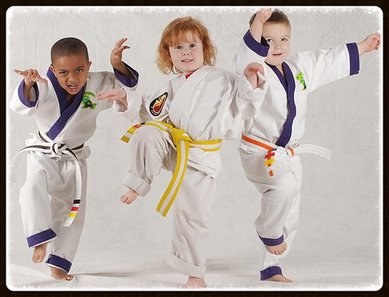 Everyone knows that four and five year olds have a lot of energy. Unfortunately, there are few organizations that offer athletic programs for that age group. With that in mind, on May 3rd Branson Karate will begin offering a Lil' Dragons Karate Program twice a week. This will be a way for preschool -aged children to be introduced to the martial arts in a fun and positive environment. The class will meet each Tuesday and Thursday at 5:15 p.m., you can learn more on this page: www.bransonkarate.org/dragons Children will be taught safety skills such as First Aid, Fire Safety, and Stranger Awareness. They will also be learning life skills such as cooperation, memory, and balance. In addition, they will be building on their social skills to improve their relationship among their peers so they can cultivate trust and respect for adults, children, and themselves.These skills will help them enter society with a more confident, enthusiastic outlook. These are the same skills that help children be better students at school, better listeners at home and more ambitious towards the future. The Lil' Dragons program is also a great way to develop the ‘pre-skills’ necessary for a child to function and thrive in social settings. Lil' Dragons will also help prepare your child for our Youth Karate Program. In the Little Dragon classes, children are exposed to positive social interaction. They will learn how to work with others and follow directions from their instructors, Vashon Borich and Ron Leach. Mrs. Borich and Dr. Leach have a combined experience of over 60 years in the Martial Arts and in working with young children. You can count on this husband and wife duo to be positive role models for your child's first experience in the martial arts. Not only is this program great for kids but it is a lot of fun too! Balls, balloons, hula hoops, and more are used to create a fun learning experience. The instructors will also use fun star charts, patches, belt stickers and stripes to help cheer your little martial artist on. If you have a pre-schooler or know of someone who does, be sure to have them visit www.bransonkarate.com for Lil' Dragons registration details.  New Class Forming on May 3, 2016! Cost: $75 per month (sign up for two months minimum and receive free uniform and white belt - a $40 value!) Instructors: Vashon Borich, Sensei & Ron Leach, Hanshi Class Time: Tuesdays & Thursdays at 5:15 p.m. Register: www.bransonkarate.org/dragons  "Sammy the Samurai" "Sammy the Samurai" This Saturday, Aug. 23rd is the famed Kokoro Kaizen event! Today is the last day to register for participation in the event. Register here: http://www.bransonkarate.org/kk.html (Registration is by donation only. We use the money to fund underprivledged students who need help purchasing karate equipment or lessons.) Here are all the details and what you can expect. First, What is it? Kokoro Kaizen means "To improve the mind, body and spirit through never ending improvement." It is an extreme workout and celebration of our 4-year anniversary of having our dojo in Branson, Missouri. Read more here from our past event: http://www.bransonkarate.org/blog/a-celebration-on-pushing-your-limits When is it? The event is held on Saturday, Aug. 23rd at Sensei Borich's home at 848 Rock Ridge Rd. in Branson West, MO 65737. She has an acreage with hiking trails. The event starts promptly at 7 a.m. and the workout ends around 11 a.m. This is followed by a BBQ potluck lunch and celebration. Who can participate? All karate students, their family and friends may participate. The workout is not exclusive to current karate students. We also need some parents to volunteer as a supporter for different stations to confirm specific workouts are completed by participants. Where do I register? All Participants Register Here: http://www.bransonkarate.org/kk.html What should I bring? All participants should bring their karate uniform to change into at Sensei Borich's Home. Karate students will be participating in their karate Gi. We will wear running shoes. Other participants may wear loose workout clothing. Be sure to have dry clothing to change into after the event. (Hint: You WILL get wet.) It is also recommended to bring a water bottle and bug spray. The morning of the event, eat a very light breakfast... like toast juice and a peice of fruit. You will be pushed to your physical and mental limits. Everyone should also bring a potluck dish for the bbq lunch. (See Sensei for potluck list.) Why are we doing this? We know that human beings are very kind to themselves and are living as easily as they can. In this kind of situation we only maintain what we have, and the only way to obtain something new is to push ourselves strongly forward. The purpose of practicing karate is to develop physical and mental strength by putting ourselves into hardship. We're all capable of so much more than we apply ourselves to, but in order to actualize that potential, we have to constantly test our limits. Also, all those who complete their puchcards will become a Kokoro Kaizen Warrior and have their names forever emblazoned on the Kokoro Kaizen Totem for generations to come. It is a huge honor to participate and complete this event. It is also a celebration and a great way to share a lifetime experience with our karate family. Register here today! http://www.bransonkarate.org/kk.html Osu! Vashon Borich, Sensei |
AuthorVashon Borich-Leach, Sensei teaches traditional karate and tai chi in Branson, Missouri. She considers herself a life-time student of the arts. Her blog is an open journal of lessons learned in the martial arts. If you are a martial artist and would like to contribute to her blog please contact her. Archives
May 2023
Categories
All
©2012 Branson Karate & Kobudo™
|
||||||||||||
©2010-2024 Vashon Enterprises LLC, DBA Branson Karate™
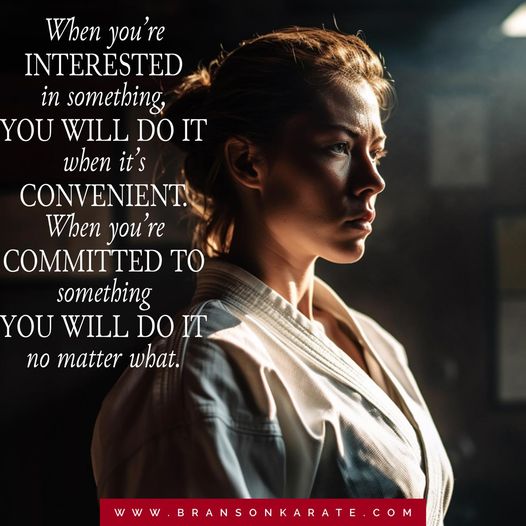
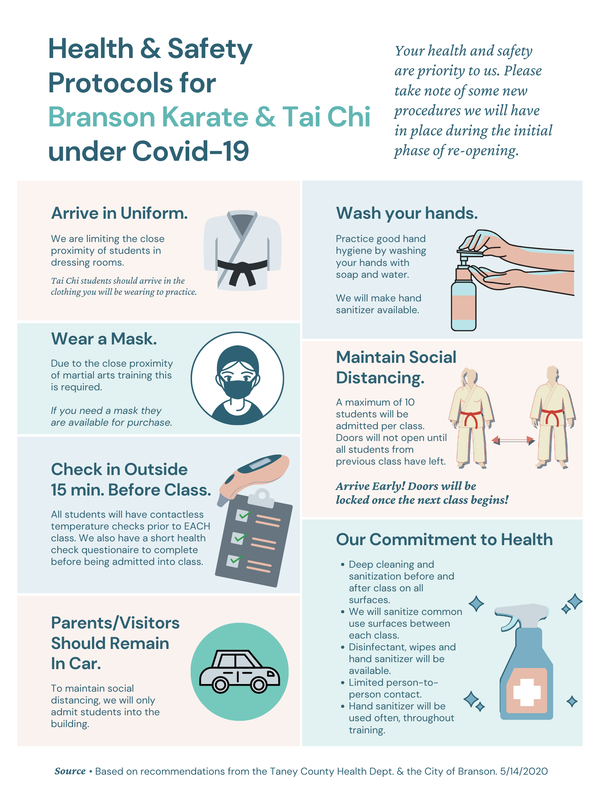
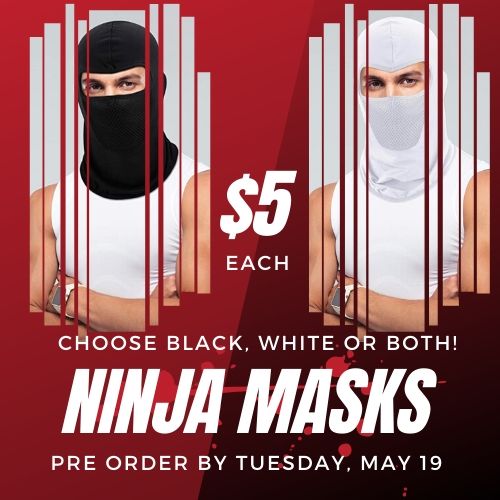
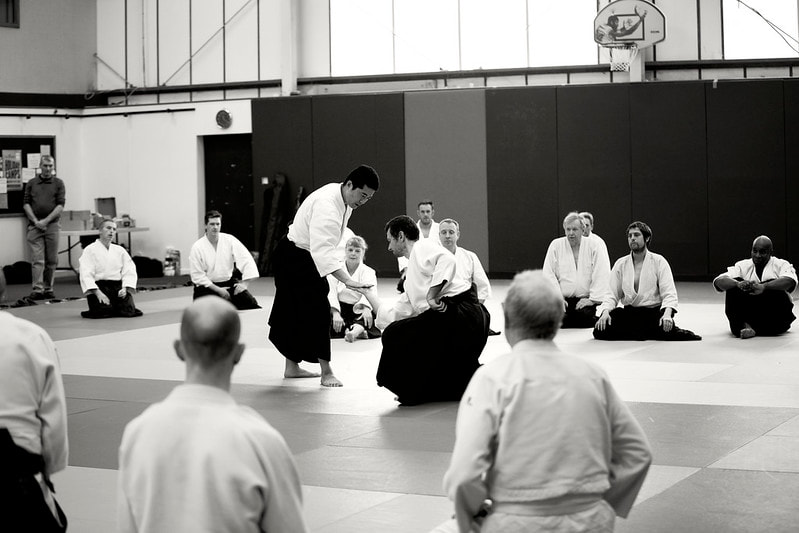
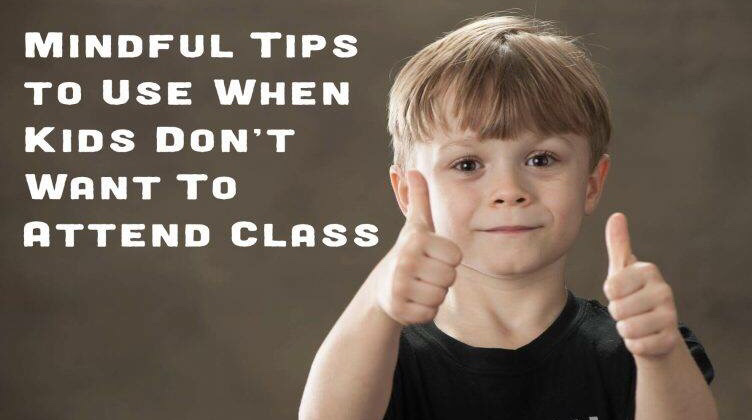
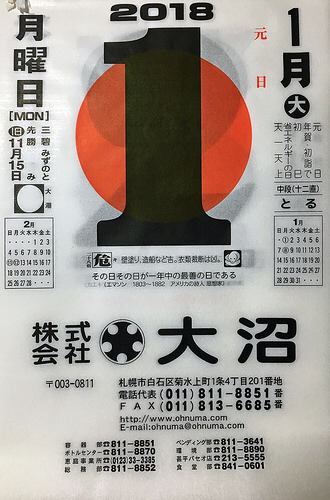
 RSS Feed
RSS Feed
